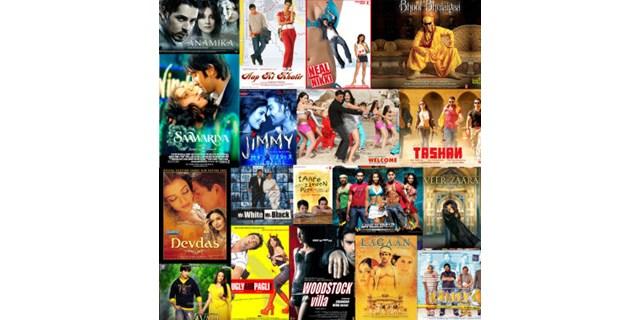
Indian mobile-phone company, Bharti-Airtel, has projected rapid growth in sales of its satellite TVs in rural India. It hopes to leverage its present network in Indian towns and villages to begin providing this service; a relatively low cost form of entertainment.
By Ketaki Gokhale
(Updates with analyst comment in fourth paragraph.)
Sept. 20 (Bloomberg) — Bharti Airtel Ltd., India’s largest mobile-phone company, forecast “rapid growth” at its satellite television unit on rising demand in rural areas for Bollywood movies and soap operas.
Bharti has signed up 3.8 million customers to gain a 14 percent market share, said Ajai Puri, chief executive officer of the company’s digital TV services business. Industrywide, as many as 12 million people may take up satellite television this year, Puri said in an interview on Sept. 17 in New Delhi.
A price war following the entry of new players like NTT DoCoMo Inc. and Telenor ASA pushed mobile-phone call rates down to as low as a penny a minute, damping earnings growth at Bharti, and prompting the carrier to seek new revenue opportunities. The company is offering a pay-per-view TV service, where new Bollywood movies are made available to rural customers within three weeks of their release in city cinemas.
“The potential is very, very large,” said Apurva Shah, head of research at Prabhudas Lilladher Pvt. in Mumbai. “But it’s going to entail huge upfront investments and the ability to sustain losses for several years to make a mark in this business. It’s ultra competitive.”
Bharti, which started its direct-to-home TV service in October 2008, lags behind Dish TV India Ltd., billionaire Kalanithi Maran’s Sun TV Network Ltd., and Tata Sky Ltd., a venture between India’s Tata Group and Rupert Murdoch’s Star Group. Still, it leads its nearest wireless rival Reliance Communications Ltd., which started its satellite TV business the same year as Bharti, and has about 3 million customers.
Almost Doubled
Satellite television subscribers in India surged to 21.3 million in the 12 months ended March 31 from 13.1 million a year earlier, according to data from the nation’s telecommunications regulator. With only a third of the nation’s 240 million households having access to cable television, Bharti aims to leverage its wireless-services retail network in towns and villages to increase its share of direct-to-home accounts.
“The market is poised for rapid growth,” Puri said. “We are positioned very well within the market to take a large chunk of that growth. We have mobile distribution through 1.5 million to 1.6 million retailers. These retailers are also available to our DTH platform for servicing customers.”
Bharti shares rose 3.7 percent as of 1:46 p.m. in Mumbai trading to 372 rupees, the highest level intraday since October 2009. The stock is the best performer in the past three months on India’s benchmark Sensitive Index, having climbed 40 percent compared with the 13 percent advance by the Sensex.
Cheapest Entertainment
Profit growth at Bharti has slowed in each of the past three years, according to data compiled by Bloomberg. The company’s net income in the year ending in March may decline for the first time in at least eight years to 74 billion rupees ($1.6 billion), according to the average of 27 analysts’ estimates compiled by Bloomberg.
Bharti’s DTH service can cost as little as 150 rupees ($3.3) a month for a basic subscription offering a limited number of channels, Puri said.
“For a customer in rural India, this is the cheapest form of entertainment,” said Puri. “A customer, at a cost of 5 rupees a day gets entertainment for his entire family” while he would have to spend a minimum of 100 rupees to take them out for a night at the cinema, he said.
‘Kill Piracy’
The pay-per-view service where new Bollywood movies are offered to rural customers within three weeks of their theatrical release is aimed at giving viewers in small towns and villages almost “a premiere,” Puri said. “Now producers have realized that DTH because of its national pan-India footprint, is the best way to kill piracy. So they give us a movie and we do a national release.”
Dish TV, a part of the Essel Group that also owns broadcaster Zee Entertainment Enterprises Ltd., started services in 2004 and had 8 million subscribers as of August, said Ritu Jain, a spokeswoman for the company. Tata Sky began its service in 2006 and has 5.5 million subscribers, said Franko William, a spokesman for the company.
Satellite television services are unlikely to see the same steep price cuts of the mobile phone industry, said Puri.
“Look at price cuts that have happened in mobile, where a lot of operators who didn’t have scale cut prices below their cost levels and only eroded value in the industry,” Puri said. “We’re the fifth operator to enter the DTH space, but we’re not going to lead any price cuts.”
–Editors: Suresh Seshadri, Anand Krishnamoorthy.
To contact the reporter on this story: Ketaki Gokhale in Mumbai at kgokhale@bloomberg.net
To contact the editor responsible for this story: Anand Krishnamoorthy at anandk@bloomberg.net
Normal 0 false false false EN-US X-NONE X-NONEhttp://www.businessweek.com/news/2010-09-20/bharti-bets-on-bollywood-digital-tvs-in-rural-india.html
